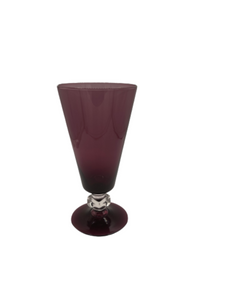
Royal Blue Glass Buoy with Decorative Rope Net | 7”W x 6” H | Japanese | Vintage
LifeXplore
$274.99
Royal Blue Glass Buoy with Decorative Rope Net. 7"W x 6" H. Japanese Vintage.
This Royal Blue Glass Fishing Buoy with a Decorative Rope Net is made of durable, solid glass material and can be hung at the doorstep to create a warm welcome for guests. This is a royal blue glass float encased in a decorative rope net. There is a loop for hanging that is part of this buoy - and FYI they way it's tied, it hangs at an interesting angle (see photo).
This buoy is a beautiful addition to coastal or Florida décor. Adds to an island or casual white environment. This buoy can be used inside or out. Hang out with other fishing floats in your collection, or purchase more than one at LifeXplore (see last photo). This one is so a nice size so it can be the centerpiece of your collection or use by itself. There is a neck at its opening that you could put fairy lights inside this buoy or convert this to a light.
The slack glass used to close the base, or Mermaid's nipple, has a sea horse stamp or hallmark. This is probably the local buoy maker's trademark, but not found in registries checked.
Measures approx. 7" W x 6" H
Weights approx. 1.5 pounds
Excellent condition. No chips or cracks noted. Sold as is in vintage condition.
Japanese fishing net balls, also known as glass fishing floats, were used to float fishing nets and ranged in size from two inches to two feet. They were first used in Japan in 1910, and were used by fishermen in many parts of the world to keep their nets afloat. Glass fishing floats are no longer used by fishermen, but many are still afloat in the world's oceans. Primarily in the Pacific. They have become a popular collector's item for beach combers and decorators.
Fishing net balls were generally made from recycled glass. Researching the internet, found reference to this:
"In a discussion with the last remaining glass float blower in Japan who is located up north in Hokkaido, he explained that glass floats were never made directly from sand but always with recycled glass. They would break sake bottles, ramune, Coca Cola bottles, shoyu and other glass materials which would be melted down and shaped into a sphere. Due to the mixture of these colored bottles, the result was the blue/green color which dominates the glass fishing floats. Of course there are other colors like brown which came from beer bottles and even more rare colors like cobalt, purple, red and orange that came from excess glass from glass factories making high end products."
This Royal Blue Glass Fishing Buoy with a Decorative Rope Net is made of durable, solid glass material and can be hung at the doorstep to create a warm welcome for guests. This is a royal blue glass float encased in a decorative rope net. There is a loop for hanging that is part of this buoy - and FYI they way it's tied, it hangs at an interesting angle (see photo).
This buoy is a beautiful addition to coastal or Florida décor. Adds to an island or casual white environment. This buoy can be used inside or out. Hang out with other fishing floats in your collection, or purchase more than one at LifeXplore (see last photo). This one is so a nice size so it can be the centerpiece of your collection or use by itself. There is a neck at its opening that you could put fairy lights inside this buoy or convert this to a light.
The slack glass used to close the base, or Mermaid's nipple, has a sea horse stamp or hallmark. This is probably the local buoy maker's trademark, but not found in registries checked.
Measures approx. 7" W x 6" H
Weights approx. 1.5 pounds
Excellent condition. No chips or cracks noted. Sold as is in vintage condition.
Japanese fishing net balls, also known as glass fishing floats, were used to float fishing nets and ranged in size from two inches to two feet. They were first used in Japan in 1910, and were used by fishermen in many parts of the world to keep their nets afloat. Glass fishing floats are no longer used by fishermen, but many are still afloat in the world's oceans. Primarily in the Pacific. They have become a popular collector's item for beach combers and decorators.
Fishing net balls were generally made from recycled glass. Researching the internet, found reference to this:
"In a discussion with the last remaining glass float blower in Japan who is located up north in Hokkaido, he explained that glass floats were never made directly from sand but always with recycled glass. They would break sake bottles, ramune, Coca Cola bottles, shoyu and other glass materials which would be melted down and shaped into a sphere. Due to the mixture of these colored bottles, the result was the blue/green color which dominates the glass fishing floats. Of course there are other colors like brown which came from beer bottles and even more rare colors like cobalt, purple, red and orange that came from excess glass from glass factories making high end products."












